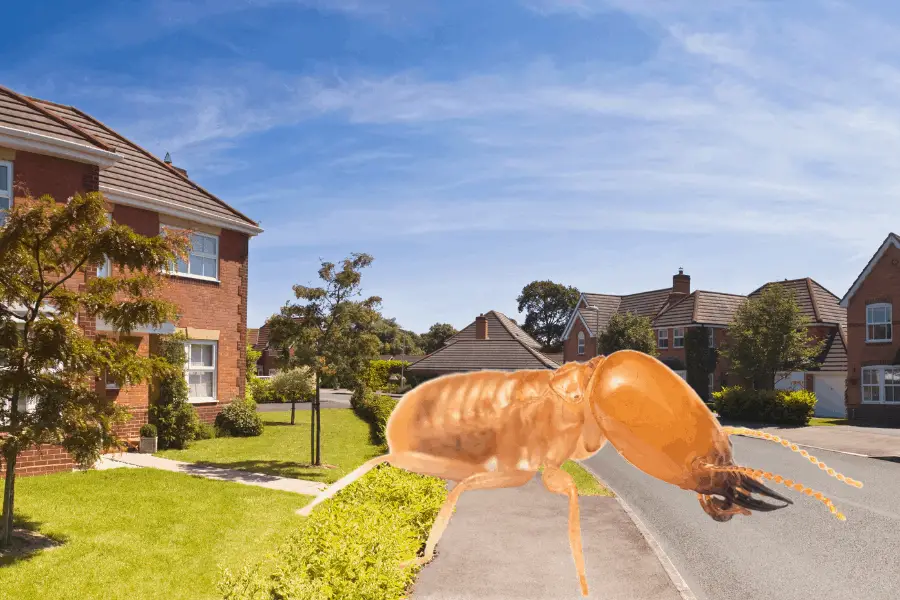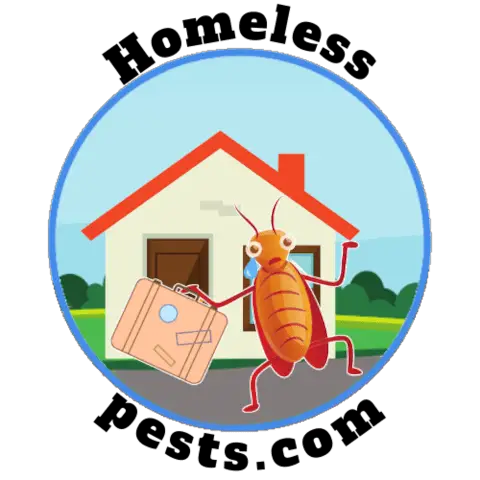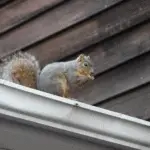
Termites are a constant concern for many Americans and the thought that they might spread from house to house is particularly alarming. So, if you happen to drive home tonight and see a neighbor has called in the pest exterminators, is your house going to be next on the menu? Perhaps it’s already becoming the entrée.
When termites have infested a next-door neighbor there is a strong possibility that they will spread to surrounding properties. This can occur before extermination measures have been taken and, particularly with subterranean species, afterward. If they are discovered in the area, check your own property immediately and again within 6 months.
There is actually a little more to the question than whether or not they always spread as there are different species of termite and different types of housing to consider.
So, you are at all worried about having or getting a termite infestation then please continue reading.
Why do termites infest homes?
The reason why termites are attracted to our homes is that they feed on wood that is decaying or rotting in some way. This can be true of both newer and older properties. Most American homes have a high wood content in their construction, which is perfect termite food.
Many species of termites live underground and can often spread through a street, neighborhood via the soil itself. If there are any cracks around the crawl spaces of your home then you could be at risk for termite infestation as well!
In addition to the construction of the house, there are many other structures around the home that termites love such as decks, wooden fences, and more.
So, if it’s made out of wood and has been around for a while, it could in theory be a lure for a colony of termites to set up shop and start chowing down.

What should you do if there is a known infestation in the area?
The steps you should take immediately if you know of a termite infestation are:
1) Have an inspection done on your property and then another after six months.
If you know for certain that you are dealing with subterranean termite rather than their dry wood cousins then you definitely need to take this step. This is because the former generally migrate ‘over land’ and the latter often hitches a ride into the home on some wood. It may cost you a little bit to be sure, but it’s best to catch these things early.
2) Check decks, wooden fences for damage, then keep doing so every few months
When you hear of a local termite infestation, don’t panic but do look over any wooden structures around your garden and under your house. If you aren’t able to do this yourself, you can ask a relative or even consult with the pest control company to do this as part of their inspection.
3) Spread the word around the neighborhood so that you can move the termites on sooner.
If you are dealing with subterranean termites you should warn as many neighbors as you can because they basically migrate after they are exterminated, at least the survivors do. The more that are dealt with the fewer there are who will survive.
What is the difference between subterranean termites and drywood termites?
The main difference between these two species as the name suggests is that dry wood termites do not nest in the ground and feed on dead or dying trees, while subterranean species are more likely to be found inside the soil itself. Both species can be found in the home, but dry wood termites are more likely to be found in the attic, while subterranean species will nest underground.
Each type of termite actually has many sub-species which can cause damage in varying degrees. One of the worst types currently residing in the USA is the Formosan termite which was introduced into America, hopefully by accident, and has become a plague on homeowners across the country.
How can you prevent termites from infesting your home?
The key to preventing termite spread is early detection and treatment, followed by constant monitoring of your property’s perimeter as well its interior spaces such that any new activity can be quickly detected before it becomes a problem or spreads further than necessary into other properties in close proximity–or even beyond
If you live in an area known for termites make sure that every few months you check your deck, wooden fences, and other structures for damage.
Consult with a pest control company as you may be one of the millions of Americans who have to take yearly precautions against the termite threat just to ensure they don’t bite a hole through your den.
If you have a known infestation in the area then it is important to take action immediately with an inspection followed by another after six months of treatment has been completed
Drywood termites are more likely to enter your home as passengers hidden in boxes, furniture, or other objects. They are also more likely to cause damage in your home’s interior spaces, especially attic spaces.
You can also find dry wood termites in firewood so make sure that you don’t leave firewood or reclaimed wood in crawl spaces and near foundations.
Subterranean termites, on the other hand, are much more likely to spread through the ground, so if someone in the vicinity has termites, your house may already be on their hit list.
How quickly can termites destroy a home?
If left untreated for a significant time, as many termite infestations are, the damage can be very costly. In the home, termites will target the wood in the home for their food. If left untreated, they will eat away at your home’s structural integrity and can cause a lot of damage to beams and other essential components.
Some colonies of termites could based on research, consume up to a cubic foot of wood in a year. Perhaps it doesn’t sound like a lot in the grand scheme of things, but those termites are eating that quantity of wood spread all over your home. The damage could be relatively light but widespread, compromising the entire structure.
Termites are not the only type of pest that can cause structural damage to a home. Carpenter ants, for example, will also target wood in homes and are something else you should be checking for on a regular basis.
Am I legally responsible for termite damage to my neighbor’s home?
Of course, I’m not a lawyer and you should always do your own due diligence and seek legal advice yourself. However, that being said, in most cases, the answer is no.
A property owner’s responsibility for termite damage to a neighbor’s home would be hard to prove and probably even harder to litigate against.
So this is why it is important to take action as soon you notice termites in your home and warn others.
Just because you noticed it first doesn’t mean it is located only to your home, nor would it be your fault if those same termites migrate elsewhere after treatment.
How can you tell if termites are in firewood?
The easiest way to tell if termites are present in your firewood is to look for the tell-tale signs of infestation. These include frass or fecal pellets that are left behind by termites and their larvae. These pellets are often an off-white color for dry wood termites but brown in color for many other species of termites.
If you think that your firewood is infested, don’t bring it into your home but instead contact a professional pest control company.
This will be the best way to ensure that your home is not infested with termites and other pests. Alternatively, you can burn the firewood as soon as possible and hope for the best.



